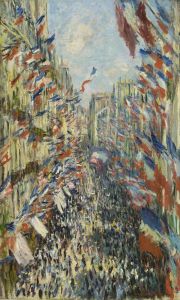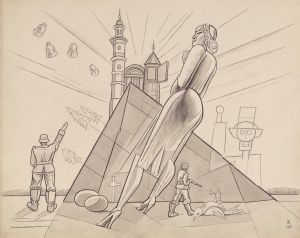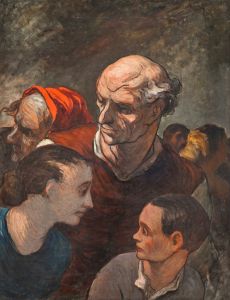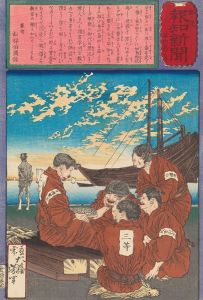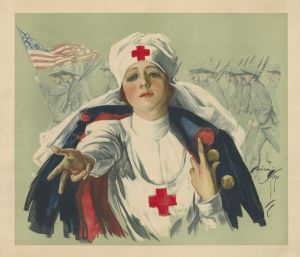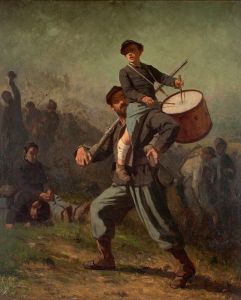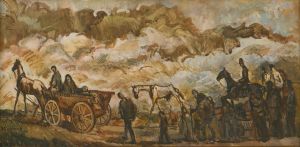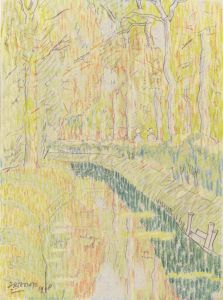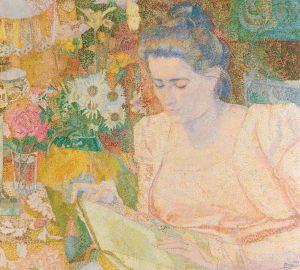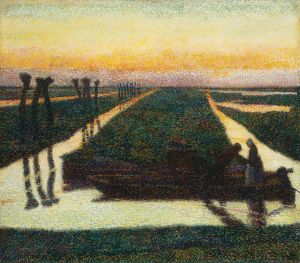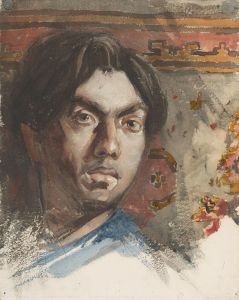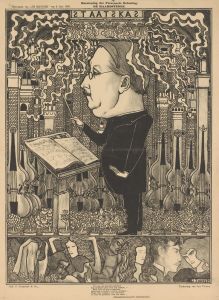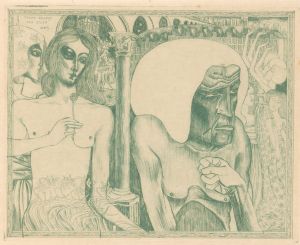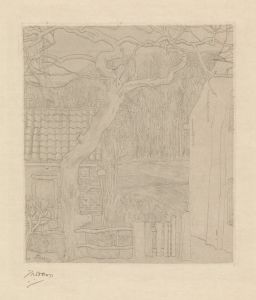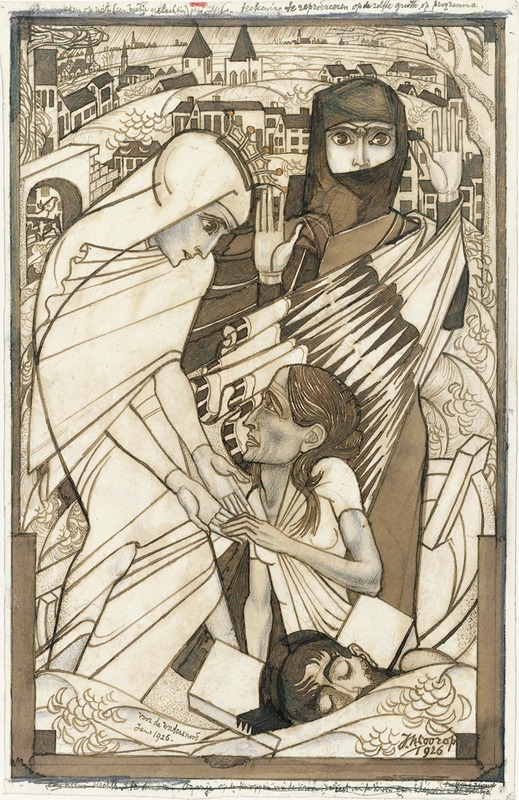
De hulpverlening tijdens de watersnood van 1926, symbolisch voorgesteld
A hand-painted replica of Jan Toorop’s masterpiece De hulpverlening tijdens de watersnood van 1926, symbolisch voorgesteld, meticulously crafted by professional artists to capture the true essence of the original. Each piece is created with museum-quality canvas and rare mineral pigments, carefully painted by experienced artists with delicate brushstrokes and rich, layered colors to perfectly recreate the texture of the original artwork. Unlike machine-printed reproductions, this hand-painted version brings the painting to life, infused with the artist’s emotions and skill in every stroke. Whether for personal collection or home decoration, it instantly elevates the artistic atmosphere of any space.
Jan Toorop's painting De hulpverlening tijdens de watersnood van 1926, symbolisch voorgesteld (The Relief Efforts During the Flood of 1926, Symbolically Represented) is a notable work by the Dutch-Indonesian artist, created to commemorate the humanitarian response to the severe flooding that struck the Netherlands in 1926. This flood, known as the "Watersnood van 1926," caused widespread devastation in the southern and eastern parts of the country, particularly affecting the provinces of Limburg, Gelderland, and North Brabant. Heavy rainfall and melting snow led to the overflowing of major rivers such as the Meuse and the Waal, inundating large areas and displacing thousands of residents.
Jan Toorop (1858–1928) was a prominent figure in the Symbolist and Art Nouveau movements, known for his deeply spiritual and allegorical works. In this painting, Toorop employs his characteristic symbolic style to depict the collective efforts of individuals and organizations who came together to provide aid during the disaster. The artwork is not a literal representation of the events but rather a symbolic interpretation, reflecting themes of solidarity, compassion, and resilience in the face of adversity.
The painting features a central composition that likely includes figures or motifs representing the Dutch people, relief workers, and possibly religious or allegorical symbols to emphasize the moral and spiritual dimensions of the relief efforts. Toorop's use of line, form, and color in this work aligns with his broader artistic approach, which often sought to convey deeper emotional and philosophical meanings. While specific details of the painting's imagery are not widely documented, it is understood to encapsulate the spirit of unity and hope that emerged during a time of crisis.
The flood of 1926 was a significant event in Dutch history, prompting large-scale relief operations coordinated by local authorities, the military, and civilian volunteers. The disaster highlighted the vulnerability of the Netherlands to flooding and underscored the importance of collective action in addressing such challenges. Toorop's painting serves as a tribute to these efforts, immortalizing the event through his unique artistic lens.
This work is one of Toorop's later creations, as he passed away in 1928, just two years after the flood. It reflects his continued engagement with social and spiritual themes, which were central to his artistic practice throughout his career. The painting is an example of how art can serve as a historical document, offering insight into the cultural and emotional responses to significant events.
Further details about the painting's current location, medium, and dimensions are not readily available in public records. However, it remains an important piece within Toorop's body of work, illustrating his ability to merge symbolic artistry with contemporary social issues.





